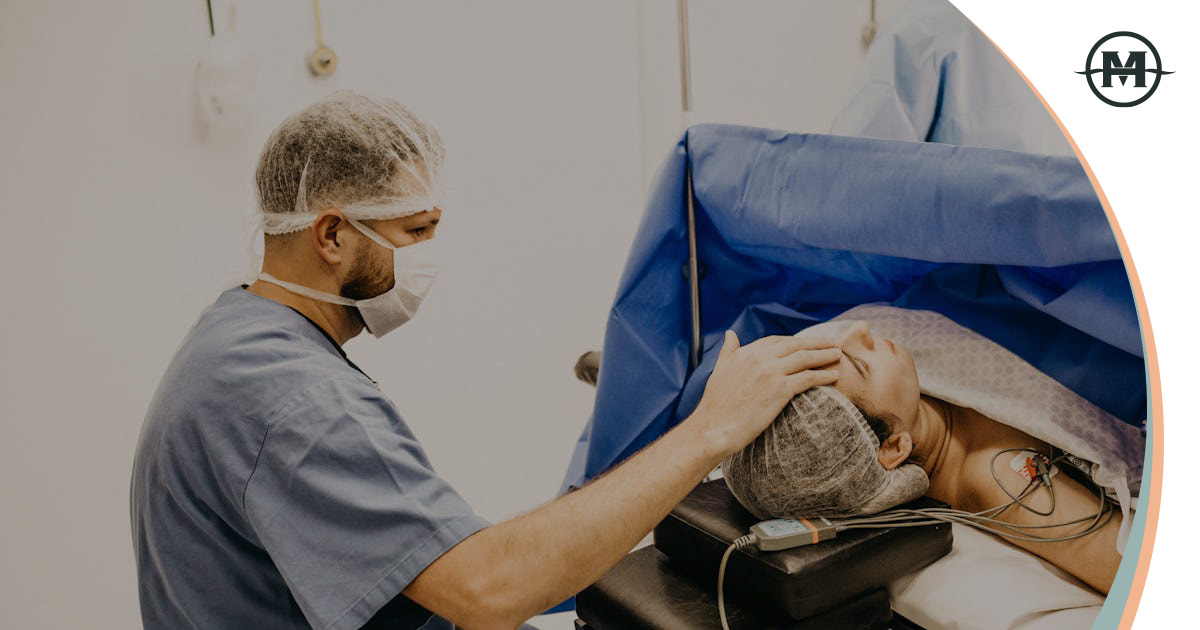The purpose of anesthesia is to block pain signals. Basically, you’re tricking your body into ignoring what would be obvious and sometimes excruciating pain that would occur during a medical or dental procedure.
When used appropriately, anesthesia is intended to be temporary. It will wear off. There may be some lingering side effects, but they will also fade away. Unfortunately, anesthesia errors can result in severe health consequences.
If you or someone in your family has suffered from a mistake related to anesthesia, you are entitled to seek compensation. Compensation can be in the form of a settlement that covers medical expenses related to the injury. There may also be monetary compensation for the pain and suffering you have endured as a result of the accident.
In order to prevail, you’ll need the support of a skilled Louisville anesthesia error attorney.
The attorneys at McCoy & Hiestand, PLC have experience handling these exact types of claims. We understand the challenges you may face not only in recovering from an error but also in dealing with large insurance companies.
We can provide guidance about your best options for moving forward with a claim.
It will be helpful to understand the types of anesthesia you might be dealing with and how that could impact your overall health.
What Are the Different Types of Anesthesia?
The Cleveland Clinic breaks down the four different types of anesthesia as follows:
Local Anesthesia
As the name suggests, local anesthesia targets a particular area of the body and is used for minimally invasive procedures. These procedures can include cataract surgery or a skin biopsy. You have probably experienced local anesthesia at the dentist if you have ever needed a cavity filled or a root canal.
Typically, you would be awake during the procedure, and the local anesthesia is administered by injection.
Sedation
You can think of sedation as a “controlled nap.” This type of anesthesia is controlled by the doctor, who can wake you by stopping the dosage.
You might not be entirely unconscious, but it’s unlikely that you’ll remember any of the procedure. This type is most often administered for procedures such as extracting wisdom teeth, colonoscopies, or setting a bone fracture.
Regional Anesthesia
Regional anesthesia will block pain receptors in a larger part of your body. One of the most common forms of regional anesthesia is an epidural that is provided to mothers during childbirth.
There might also be procedures that call for regional anesthesia and sedation.
General Anesthesia
General anesthesia is the strongest form of anesthesia as it renders you completely unconscious. This is used for invasive procedures, such as any type of surgery.
General anesthesia is administered intravenously or by a breathing mask. It also carries the most risk of mistakes and complications.
What Risks and Injuries Are Associated with Anesthesia?
Anesthesia is considered a toxic substance. It only works as intended when it is properly administered and monitored. It only takes a minor error in dosage to trigger a catastrophic injury, including the following:
Intubation-Related injuries
When preparing for some form of anesthesia, patients might need to be intubated, which requires inserting tubes down your throat. If done improperly, there can be damage to the trachea.
Cardiovascular Harm
An improper dosage of anesthesia can trigger a cardiovascular event such as a stroke or heart attack.
Brain Damage
Our brains require oxygen to thrive and function properly. Too much anesthesia can deprive the brain of oxygen, which can lead to brain damage.
Anesthesia Awareness
Overdosing on anesthesia can cause serious problems. There can also be issues with too little anesthesia. That can create a situation referred to as “anesthesia awareness.”
When that occurs, you would be aware of the procedure that is being performed on you, but you would be unable to speak or move. This type of scenario can lead to significant psychological trauma.
Coma or Death
The most extreme anesthesia mistakes can lead to brain damage, resulting in coma or death.
Who Can Be Liable for Anesthesia Errors?
If an anesthesia error causes harm to a patient, it is important to determine who is at fault. Here are some of the potential medical professionals who administer anesthesia:
- Doctor/medical provide, such as a dentist
- A physician anesthesiologist
- Fellows or residents – physicians in training
- A certified registered nurse anesthetist
- An accredited anesthesiologist assistant (CAA)
It is important to note that in some instances, an anesthesia mistake can occur if there is an error with patient preparation or medical history. For example, a patient is not supposed to eat before some forms of anesthesia.
If the admitting nurse neglects to indicate that the patient did eat, they could be at fault because the anesthesiologist bases their administration of anesthesia on that information.
When an anesthesia mistake occurs, it can be categorized as a medical malpractice case.
That’s when you want to involve the attorneys at McCoy & Hiestand. We’ve helped many clients pursue valid claims against medical professionals whose negligence resulted in severe harm. We understand the complexity of these cases and have built up a network of reliable medical experts to support our clients.
If you’re dealing with the aftermath of an anesthesia mistake, we want to hear what happened.
Call to schedule a consultation today.

